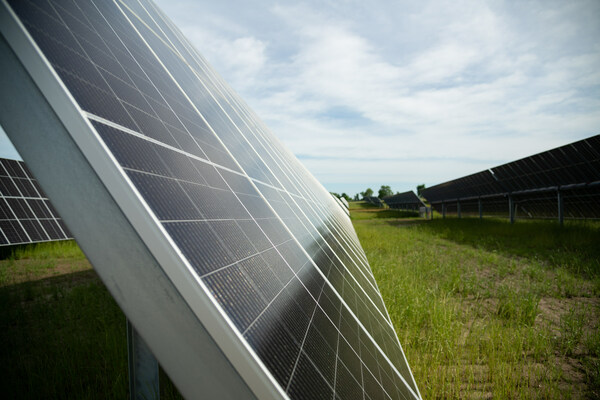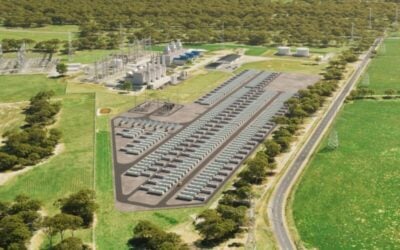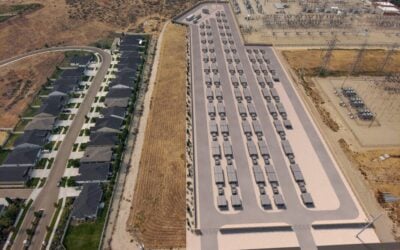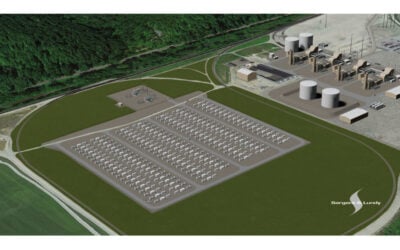
Ameren Missouri aims to procure 800MW of battery storage, representing US$650 million investment, in its service area connected to the Midcontinent Independent System Operator (MISO) grid.
The regional subsidiary of utility holding company Ameren recently announced its updated 20-year plan to show how it aims to meet reliability needs of customers and ultimately justify its return on spending before state regulators.
Enjoy 12 months of exclusive analysis
- Regular insight and analysis of the industry’s biggest developments
- In-depth interviews with the industry’s leading figures
- Annual digital subscription to the PV Tech Power journal
- Discounts on Solar Media’s portfolio of events, in-person and virtual
While the Integrated Resource Plan (IRP) does set out Ameren Missouri’s intention to also continue investing in some natural gas generation, the utility said it is committed to ending the use of coal. Meanwhile the company is accelerating its long-term renewable energy investment plans.
Indeed, Ameren Missouri’s levelised cost of energy (LCOE) modelling found solar PV and wind to be the cheapest new resources that can be added to its portfolio.
Battery storage was found to be much cheaper than simple cycle gas turbines which provide peaking capacity but not cheaper than baseload combined cycled gas power plants, although when modelled with investment tax credit (ITC) incentives factored in, batteries were cheaper than nuclear.
Targeting net zero greenhouse gas (GHG) emissions by 2045, its interim targets include adding 2,800MW of renewable energy by 2030, and 4,700MW by 2036 – the latter date brought forward by four years from Ameren Missouri’s previous IRP.
The utility had previously said it would add 400MW of energy storage to its portfolio by 2035. Instead, it now wants to add 400MW by 2030, and a further 400MW by 2035. That means it would reach its previously announced 2040 target of 800MW five years earlier.
Coal has been the historical backbone of electric generation in the MISO grid and wholesale market territory that spans all or part of 15 US states and part of Canada.
However as the economic and environmental case for coal diminishes rapidly, there has been an acceleration in both wind and solar deployment over the past few years that has more recently led to increases in planned and deployed energy storage facilities.
Earlier this year, Energy-Storage.news spoke with Aubrey Johnson, VP of system planning and competitive transmission at MISO for an interview. Johnson spoke about how energy storage can help solve the challenges of integrating growing shares of renewable energy onto the grid, but at the same time, adding storage itself to the grid in the first place is not an easy task.
Energy storage is only viable option for MISO energy transition
While the MISO service area had about 600MW of energy storage online as of the midpoint of this year, mostly paired with generation and far, far less than the 5GW+ mark California’s CAISO grid reached in May, for example, it has more than 30GW of standalone energy storage and even more co-located storage-plus-renewable projects in its grid interconnection queue.
Ameren Missouri noted that it had evaluated a diverse range of energy storage technologies and their potential for the IRP. Those included lithium-ion batteries, pumped hydro energy storage (PHES), compressed air, liquid air, redox flow batteries, hydrogen storage and lead-acid batteries.
It found that battery storage, primarily with lithium-ion, and PHES were the most cost-effective options, while the company also claimed that it considered only utility-owned battery storage facilities and not third-party procurements to be cost-effective.
On a related note, MISO’s Aubrey Johnson said in the April interview with Energy-Storage.news that while energy storage does pencil out more expensively than some other resource options, it is the only viable way to effectively decarbonise the grid while accommodating growing electric load.
Ameren Missouri is also among winning bidders in MISO’s competitive solicitations to build new transmission infrastructure, with around US$10 billion of successful bids in the first tranche of the grid operator’s Long Range Transmission Planning (LRTP) auctions held in 2022.
Investments in energy storage by utilities in MISO such as Ameren Missouri and the parent companies’ other subsidiaries will be important in its energy transition. They will likely comprise a small portion however of the overall deployment of storage in the region, with developers eyeing potential merchant opportunities for standalone storage as well as for contracted revenues from smoothing solar and wind generation.
The market still needs some reconfiguration for that to pan out, MISO’s Aubrey Johnson said in the interview. MISO only added electricity storage to its market portfolio for the first time around a year ago. Yet as with neighbouring PJM – the only transmission operator service territory bigger than MISO – the fundamental drivers appear to be there for storage to take off.






